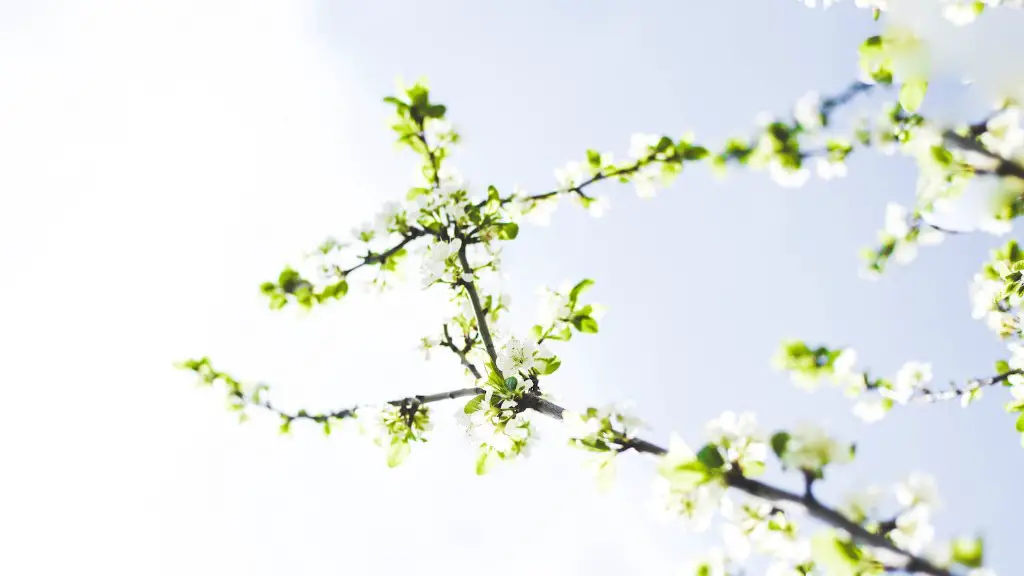Growing Cherries
Cherries are a type of stone fruit that grow on trees, with two main varieties – sweet cherries and sour cherries – each preferred for different applications in the kitchen. Sweet cherries are used for desserts, jams, and jellies, while sour cherries are commonly used for pie fillings and sauces.
The trees grow wild in subtropical and temperate climates, reaching a maximum height of 10 to 15 feet, with some trees – such as the pie-cherry variety – capable of reaching 20 to 25 feet. Unlike many fruit trees, the cherry tree does not undergo a dormant state and instead continues to grow throughout the year.
Besides atmosphere and climate, there are general care aspects to ensure the trees continue to bear fruit. If a cherry tree isn’t properly pruned, yields will decrease and become more susceptible to disease and pests. When harvesting cherries, it’s best to wait until they are almost fully ripe, with an eye towards leaving them on the tree until the last possible moment.
Environmental Factors
Factors to consider when cultivating cherries include temperature and rainfall, as cherries need these two elements to flourish. They are frost-tolerant, but if temperatures drop much lower than expected, the fruit may be affected. The ideal temperature range for optimal cultivation of cherries is from 65F to 75F; although the trees can survive in cooler or warmer climates, the fruit may not ripen properly.
The rainfall amount for cherries also has to be just right: if there is too much rain, the cherries will split and rot, while too little rain may cause the fruit to dry out and crack. When the trees are well-watered, the cherries will generally swell and soften, signifying ripeness.
Cherries are surprisingly sensitive to sun, therefore shade should be provided during the hottest time of the day. This can be achieved with netting or shade cloth, or by growing other taller trees around the cherry tree to provide natural shade.
Harvesting Cherries
These factors all contribute to the ripening process of cherries. Knowing the right time to pick the cherries is key to successful harvest. The cherries should be firm and full-sized, without any greening at the stem. If they are ripe, a gentle twist will remove the cherry from the stem with ease.
Some people leave cherries on the tree to deepen their color, since the redder spotted cherries sell for a higher price. However, when cherries are left on the tree for too long, it can cause the fruit to become over-ripe and soft, which can make them unsuitable for certain recipes.
Another thing to be aware of when harvesting is the potential issue of birds stealing the cherries. If they become a problem, netting should be used to protect the tree as much as possible from these pesky birds. If the netting is unable to keep the birds away, repellents such as hanging aluminum tins or balls of yarn can help to startle them.
Storage and Preservation
When storage is necessary, cherries should be kept cold and dry in an airtight container to extend their shelf life and prevent air from reaching them. Before storing the cherries, any stems should be removed and any damaged or soft fruit discarded, to avoid cross-contamination or spoilage.
Cherries also lend themselves well to other forms of preservation such as drying, juicing, freezing, and making jellies or cakes. All of these methods can be used to prolong the shelf life of the cherries and make the most out of the harvest.
Nutritional Value of Cherries
Last, but not least, cherries are also packed with a variety of nutritional benefits. They are a great source of vitamin C, which helps to boost the immune system, and contain a range of other vitamins and minerals such as B vitamins, iron, and calcium. They are also full of antioxidants and other phytonutrients, making them a healthy snack for those looking to improve their overall health.
Diseases and Pests
When growing cherries, it is important to be aware of the potential diseases and pests that may attack the tree. Common diseases include brown-rot and peach-leaf curl, while pests like borers, aphids, and scale can cause stress and damage to the tree. To prevent these problems, it is important to regularly monitor for signs of infestation and take action as soon as possible. Treatment strategies range from natural, organic remedies such as spraying the trees with horticultural oil, to chemical control methods.
Conclusion
Growing and harvesting cherries can be a rewarding experience and with proper considerations in place, picking the perfect ripe fruit can be a breeze. In addition to the countless culinary uses of cherries, a potential crop can also add beauty to any landscape. With the right cultivation and harvesting strategies, a backyard cherry tree can become a reliable and bountiful source of delicious fruit.


